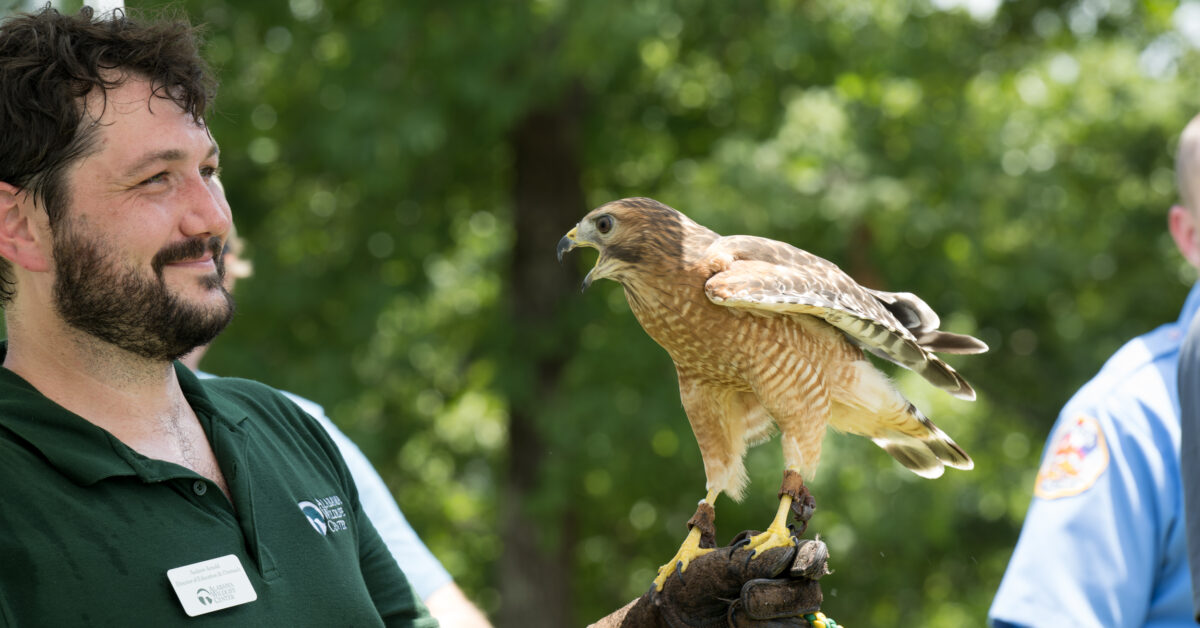Reviewed by: Sharron Swain
How to grow a thriving butterfly garden in Birmingham—tips from Verna Gates
Reading time: 5 minutes
This piece was written by Verna Gates for Bham Now.

If you want to change the world, plant flowers. Flowers nurture bees and butterflies—they’re critical pollinators for food crops and native plants. They also nurture us, with color, scent and hours of entertainment as you watch flying flowers dance among the blooms in your garden. Here’s how Verna Gates is growing a butterfly garden in Birmingham.
Meet Verna Gates

She’s an expert at all things Birmingham. So much so that she wrote a book, “100 Things to Do in Birmingham Before You Die,” which tells the best moments and memories of The Magic City—some that even lifelong residents don’t know.
Verna is also an expert on gardening and how to take care of butterflies right from her own home in Birmingham. She’s sharing that knowledge to the community as the founder and executive director of Fresh Air Family. It’s an outdoor education program that offers:
- Camps
- In-school programs
- Outdoor adventures
- School field trips
What will you see in a butterfly garden?




The season starts in summer—you’ll spot male Gulf Fritillaries. Tiny eggs appear on the leaves of the host plant, morphing into telltale signs of nibbled leaves. Caterpillars start as tiny, orange-eating machines with black spiky hairs on their back. They grow fat eating the leaves.
Soon, chrysalises line the top of my glassed-in porch like a string of Christmas lights. When the dark pupa turns transparent, like onion skin on the outside, it’s time to see them emerge. They pull out, crumpled and small. Once the wings are “dry,” they head for your flowers.
In late summer, monarch butterflies begin seeking out milkweed as a spot to lay their orangish eggs. They pass through Birmingham as they make a two-way route to and from Mexico. Monarchs can fly 100 miles a day, so they need our help as it takes birthing generations to get back and forth from Mexico. For those who enjoy blueberries and squash, it is important to feed and shelter monarchs as their numbers are dwindling.
Did you know monarchs have an important cultural significance? In traditional legends, the Monarchs are the souls of lost warriors and loved ones returning home.
In late summer and early fall, you can see goldfinches in your garden. These small, yellow birds happily indulge in the seeds of my swamp sunflower, a native to Alabama. As an added bonus, goldfinches represent good luck and riches, especially those provided by nature and generosity.
In the spirit of cooperation, the butterflies pollinate the flower, creating seeds for the birds.
How can you grow a butterfly garden?


My small garden provides a nursery that nurtures more than 150 butterflies per year. I let them have the run of the place. Fortunately, creating a butterfly habitat in your yard is easy. All you need is:
- Good soil
- No grass, herbicides or pesticides
- Patience
- The right plants
Offering cultivars to pollinators is akin to feeding them McDonald’s. While it’s okay to indulge from time to time, it’s hard to build a good chrysalis on inferior nourishment.
We get it—no grass! Just think of it as new-found hours not dedicated to mowing. Of course, some manage to maintain some semblance of both. As a no-grass gardener, I am rewarded with hundreds of flower blooms changing with the season.
Which flowers should you grow?


Butterflies thrive on native plants. Fortunately, Alabama ranks number four in biodiversity in the nation and is home to ravishingly beautiful native plants, including:
- Asters
- Butterfly bush
- Coneflower
- Native sunflower, such as the swamp sunflower
- Passion vine
- Salvia
As these butterflies move from post to post, they complete an important mission: pollination of these plants.
The easiest butterfly to attract is the Gulf Fritillary, a bright orange creature, who despite tiny wings, migrates to the Gulf Coast. You can provide a nursery for the new generation that will tag team the migration—adults live for two to four weeks.
One of the prettiest native flowers—the passion vine—serves as the attractor to Gulf Fritillaries. The passion vine explodes with white flowers covered with a purple fringe. It produces a tangy fruit that is edible and allegedly calming to one’s nerves.
Passiflora incarnata is common, easy to find and simple to grow. It flourishes in sun or partial shade. Simply place the pod in a good spot—I prefer partial shade—and dust it lightly with dirt.
It can run up trellises, walls and mailboxes. Or, you can give it the run of the yard. When it gets happy, the vine will gladly spread by dropping its pods from multiple spots on the vine. If you receive a pod from a friendly neighbor, the key is to mimic how the plant spreads itself.
How can you attract monarch butterflies?

There is only one host plant for the monarch: milkweed. It took two years for these butterflies to find mine, but was it worth it. Seeing the leaves rife with holes is as pleasurable as seeing their flowers. Soon, a new flock will appear.
Milkweeds prefer sun and can be found at many nurseries. All of the varieties appeal to the monarchs.
Wildlife in the garden brings energy and life to the garden. Flowers get prettier when they do double duty as a life-sustaining source for our loveliest insects. While there may be times when your garden looks a bit wild to humans, it looks perfect to flying guests. Plant it and they will come: birds, butterflies and even your neighbors.
For more news around Birmingham, follow Bham Now on Facebook, Instagram, YouTube, TikTok + LinkedIn.



